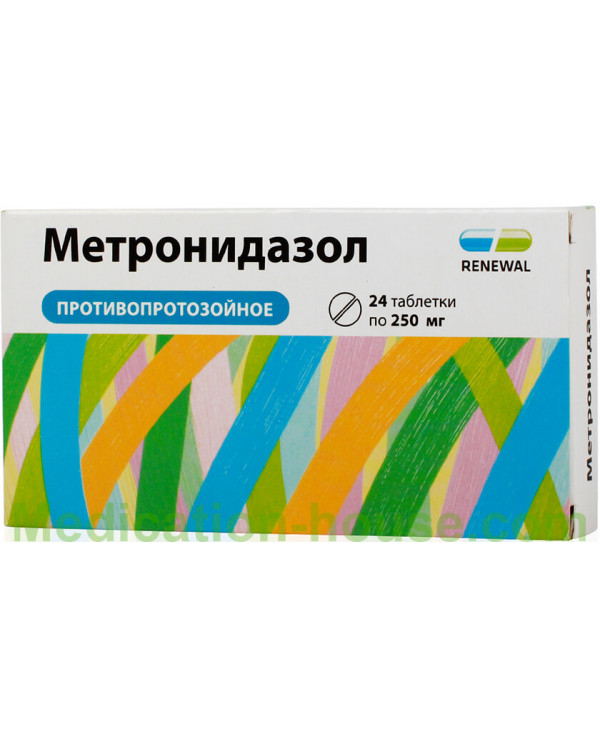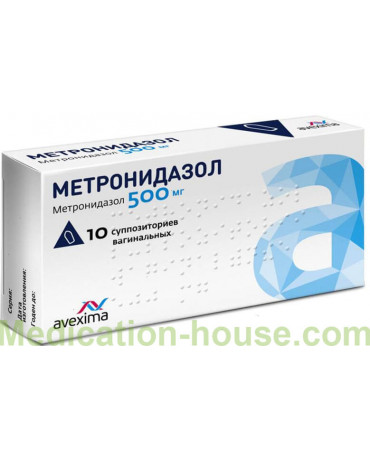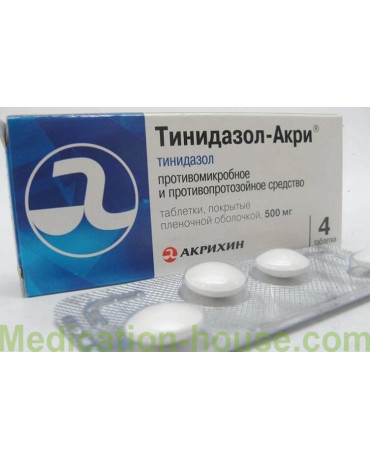Metronidazole instruction
You can buy Metronidazole here
The bactericidal effect is due to the ability of the drug to affect the respiratory process of harmful anaerobic microorganisms and the synthesis of nucleic acids.
Release form and composition
Metronidazole tablets have a white or white with a yellow-green tint color, a flat-cylindrical shape with a separation risk. The main active ingredient of the drug is metronidazole, its content in one tablet is 250 mg. It also includes auxiliary components:
Talc.
Potato starch.
Stearic acid.
Metronidazole tablets are packaged in blister packs of 10 and 20 pieces. A carton pack contains from 1 to 10 blisters with an appropriate number of tablets and instructions for using the drug.
Pharmacological effect
An antibacterial drug has a special mechanism of action, which is to activate the biochemical reduction of the fifth nitro group using intracellular transport proteins of the simplest and anaerobic mechanisms, as described in the instructions for use. Recovered cells interact with the DNA of microorganisms, which is accompanied by inhibition of the synthesis of their nucleic acid. As a result, the immediate death of bacteria occurs.
The instruction of the antibacterial tablet preparation contains information that it is effective against gram-negative and some positive anaerobes. The minimum inhibitory concentration for the destruction of pathogenic microorganisms is the dose of 0.125-6.25 µg / ml. The antibiotic, together with amoxicillin, is active against Helicobacter pylori, since such a combination of drugs contributes to the suppression of the development of resistance.
The drug "Metronidazole" is not active against aerobic microorganisms and facultative forms of anaerobes. It should be noted that in the presence of mixed flora, this drug acts synergistically with antibacterial agents that are effective against simple aerobes. Metronidazole affects tumors by increasing their sensitivity to radiation. The drug has a disulfiram-like effect, causing sensitization to alcohol, and also turns out to be a stimulator of reparative processes.
Indications for use
What helps? Metronidazole is used in the following cases:
with alcoholism;
for the treatment of gastritis and duodenal ulcers;
with infections provoked by Bacteroides spp. (infections of the abdominal cavity, pelvic organs, infectious diseases of soft tissues and skin, ovarian abscess and fallopian tubes, vaginal vault infections after surgery);
in protozoal infections (intestinal or extraintestinal amebiasis, balantidiasis, cutaneous leishmaniasis, trichomoniasis, trichomonas urethritis, giardiasis, trichomonas vaginitis);
for the treatment of infectious diseases of the central nervous system, bones and joints, triggered by the activity of Bacteroides spp .;
with pseudomembranous colitis associated with the use of antibiotics; for the prevention of postoperative complications of appendectomy, gynecological surgical interventions, operations on the near-rectal area.
Suppositories Metronidazole is used to treat urogenital trichomoniasis and bacterial vaginitis caused by susceptible microorganisms.
Contraindications
lactation period;
leukopenia (including in history);
organic lesions of the central nervous system (including epilepsy);
hypersensitivity to the composition of the drug Metronidazole, from which side effects may develop;
liver failure (in the case of the appointment of large doses);
pregnancy (1 trimester).
Use during pregnancy and lactation
The drug is strictly contraindicated in the first trimester. In II and III drugs is assigned solely at the discretion of the attending physician.
The infant, if necessary, the appointment of Metronidazole mother, it is advisable to transfer to artificial feeding.
Dosage and method of use
The instructions for use indicate that Metronidazole tablets are taken orally, during or after a meal, (or squeezed milk), without chewing.
With giardiasis - 15mg / kg / day in 3 doses for 5 days.
With giardiasis - 500 mg 2 times / day for 5-7 days. Children under 1 year old - 125 mg / day, 2-4 years - but 250 mg / day, 5-8 years - 375 mg / day, older than 8 years - 500 mg / day (in 2 doses). The course of treatment is 5 days.
In chronic amebiasis, the daily dose is 1.5 g in 3 doses for 5-10 days.
Adults: with asymptomatic amebiasis (if a cyst is detected) the daily dose is 1-1.5 g (500 mg 2-3 times / day) for 5-7 days.
In acute amebic dysentery - 2.25 g in 3 divided doses until symptoms cease.
When balantidiasis - 750 mg 3 times / day for 5-6 days.
With liver abscess - the maximum daily dose is 2.5 g in 1 or 2-3 doses, for 3-5 days, in combination with antibiotics (tetracyclines) and other methods of therapy. Children 1-3 years old - 1/4 adult dose, 3-7 years old - 1/3 adult dose, 7-10 years old - 1/2 adult dose.
With pseudomembranous colitis - 500 mg 3-4 times / day.
In case of ulcerative stomatitis, adults are prescribed 500 mg 2 times / day for 3-5 days; children in this case, the drug is not shown.
When treating anaerobic infection, the maximum daily dose is -1.5-2 g.
In the treatment of chronic alcoholism, 500 mg / day is prescribed for a period of up to 6 (not more) months.
For the prevention of infectious complications - at 750-1500 mg / cyt in 3 doses for 3-4 days before surgery, or once 1 g per 1 day after surgery. 1-2 days after surgery (when oral administration is already allowed) - 750 mg / day for 7 days.
For eradication of Helicobacter pylory - 500 mg 3 times / day for 7 days (as part of combination therapy, for example, amoxicillin combination 2.25 g / day).
When trichomoniasis - 250 mg 2 times / day for 10 days, or 400 mg 2 times / day for 5-8 days. Women need to additionally prescribe Metronidazole in the form of vaginal suppositories or tablets. If necessary, you can repeat the treatment or increase the dose to 0.75-1 g / day. Between courses, you should take a break of 3-4 weeks with repeated laboratory tests. An alternative treatment regimen is the appointment of 2 g once a patient and his sexual partner. Children 2-5 years old - 250 mg / day; 5-10 years - 250-375 mg / day, over 10 years - 500 mg / day. The daily dose should be divided into 2 doses. The course of treatment is 10 days.
In cases of pronounced impaired renal function (CC less than 10 ml / min), the daily dose should be halved.
Side effects
The drug has a number of side effects from many body systems.
On the part of the digestive system, vomiting, nausea, dry mouth, glossitis, pancreatitis can be observed.
On the part of the urogenital system can be cystitis, candidiasis, urinary incontinence, urine staining.
On the skin can be observed urticaria, itching, hyperemia.
The nervous system can respond with headache, insomnia, peripheral neuropathy, hallucinations, confusion, irritability, excitability, impaired coordination of movements with ataxia, depression.
All of the above symptoms relate to symptoms of intoxication, if they occur, urgently need to stop treatment, then rinse the stomach or skin, and consult a doctor. Symptoms of giardiasis can appear with successful treatment of the pathology, they need to be checked every 3-4 days 3 times.
Overdose
If an overdose of the drug occurred, the patient may experience ataxia, nausea, and vomiting. In the case of severe overdose, peripheral neuropathy may occur, as well as seizures.
In this case, symptomatic therapy is practiced, there is no specific antidote.
special instructions
Before you start using the drug, read the specific instructions:
It paints urine in a dark color.
In combination with amoxicillin is not recommended for use in patients younger than 18 years.
With prolonged therapy, it is necessary to control the blood picture.
In case of leukopenia, the possibility of continuing treatment depends on the risk of developing an infectious process.
The appearance of ataxia, dizziness, and any other deterioration in the neurological status of patients requires discontinuation of treatment.
It can immobilize treponema and lead to a false-positive Nelson test.
When treating Trichomonas vaginitis in women and Trichomonas urethritis in men, it is necessary to abstain from sex. Necessarily simultaneous treatment of sexual partners. The treatment does not stop during menstruation. After treatment of trichomoniasis, control tests should be carried out for three consecutive cycles before and after menstruation.
After giardiasis treatment, if symptoms persist, after 3–4 weeks to perform 3 feces analyzes at intervals of several days (in some successfully treated patients, lactose intolerance caused by invasion may persist for several weeks or months, resembling giardiasis symptoms).
Compatibility with alcohol
During the treatment period, ethanol use is contraindicated (a disulfiram-like reaction may develop: spastic abdominal pain, nausea, vomiting, headache, a sudden rush of blood to the face).
Drug interactions
When using the drug, you must consider the interaction with other drugs:
Sulfonamides enhance the antimicrobial action of metronidazole.
It enhances the effect of indirect anticoagulants, which leads to an increase in the time of formation of prothrombin.
Similar to disulfiram, it causes intolerance to ethanol.
When taken simultaneously with lithium preparations, the concentration of the latter in plasma and the development of symptoms of intoxication may increase.
It is not recommended to combine with non-depolarizing muscle relaxants (vecuronium bromide).
Cimetidine inhibits the metabolism of metronidazole, which can lead to an increase in its concentration in serum and an increase in the risk of side effects.
The simultaneous administration of drugs that stimulate microsomal oxidation enzymes in the liver (phenobarbital, phenytoin) can accelerate the elimination of metronidazole, as a result of which its concentration in plasma decreases.
Simultaneous use with disulfiram can lead to the development of various neurological symptoms (the interval between administration is at least 2 weeks).
Reviews
We picked up some reviews of people taking Metronidazole:
Catherine
Saw it 2 tablets in the morning and evening with doxycycline for 7 days. At first, I didn’t understand what makes me dizzy, noisy, I’m wobbling and nauseous. I read about side-horror, half of them I just collected. I hope he really helps and I was not in vain.
Helena
For all who have noticed the side effects of drug treatment: keep in mind that such symptoms can be caused by intoxication by decay Giardia, which die from metronidazole, maybe you just have a chronic latent giardiasis ...
Karina
I used metronidazole for severe acne, I prescribed his doctor a cosmetologist, I liked the effect, the acne was much less. That's just a little nauseous after taking, and then nausea passed somehow herself.
Tatyana
For me, metronidazole is a lifeline. It is always in my purse. Like many women, I often suffer from cystitis. It happens that this ailment takes by surprise at work. In this case, I have metronidazole, and I know that it will definitely help. This is an old proven tool that was used by my mother. It is an antimicrobial and anti-inflammatory drug. Tablets of round color, with easy yellowness. It tastes very bitter, and this is the only negative for me. When exacerbation of cystitis helps me within 20 minutes after taking. The only thing I would like to say is that, like any effective antimicrobial medicine, metronidazole also kills the beneficial microflora, therefore, so that there are no problems with the intestines, it is advisable to drink bifidobacteria after taking it.
Terms of sell
You don't need a prescription to buy Metronidazole.





